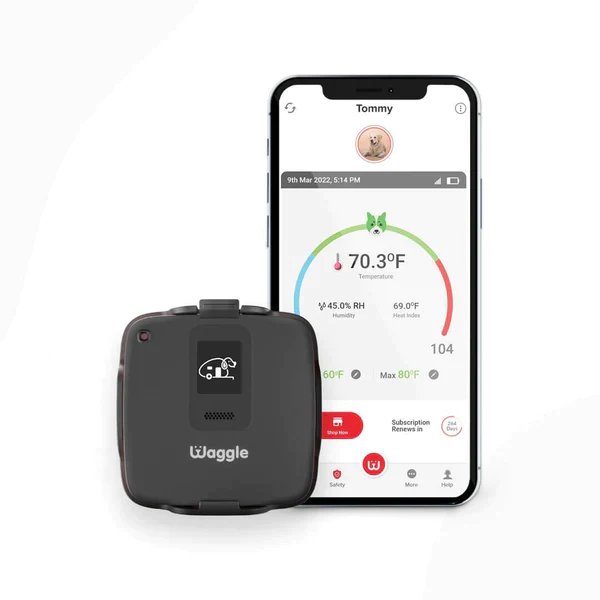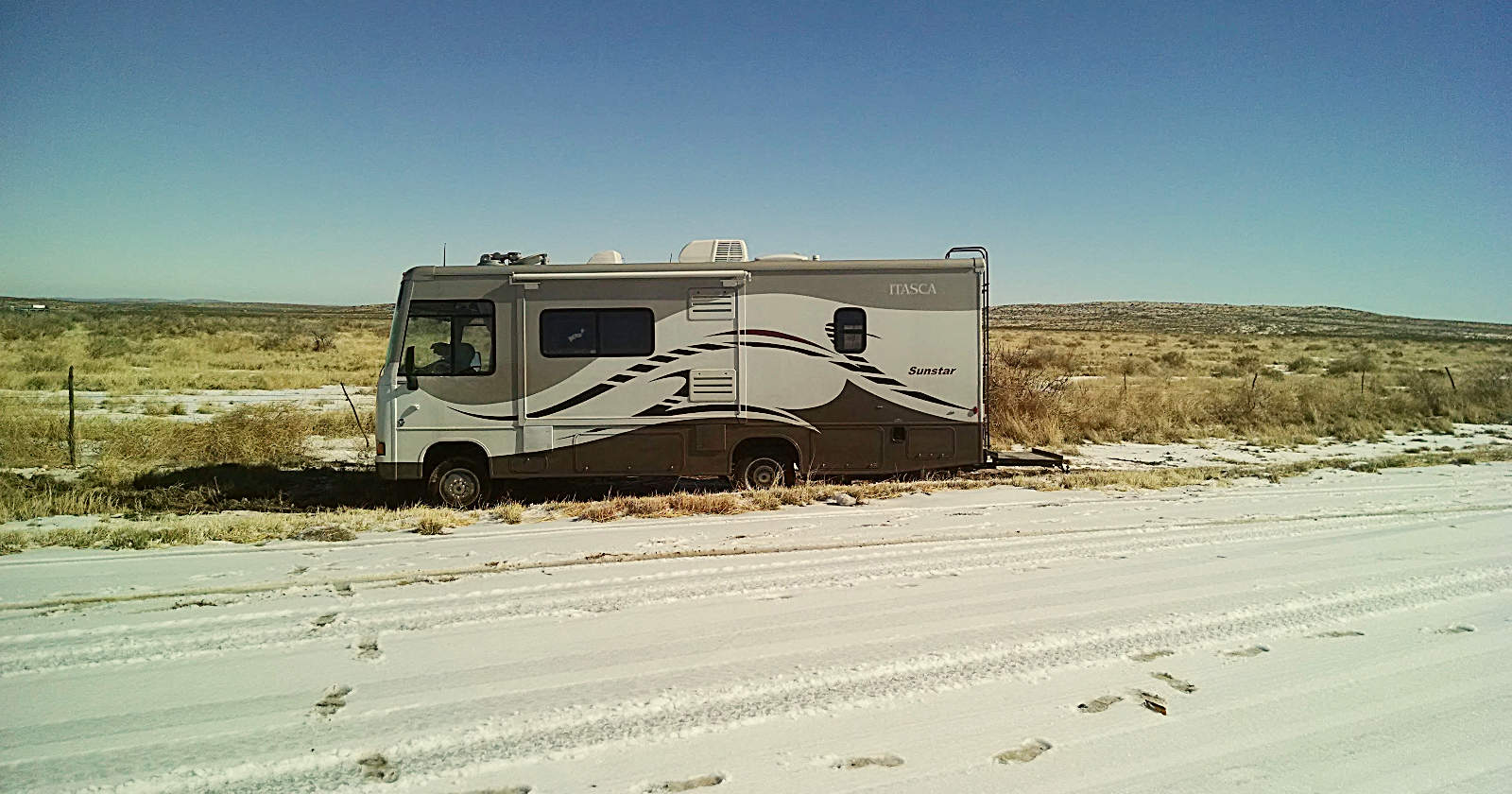RVing with pets in the winter adds to the fun of RV Camping
RVing with pets doesn’t stop with summer temperatures. Dogs and many cats love joining their humans on winter RV camping expeditions. After all, pets love being involved in family activities too. While most cats seem to prefer to watch the fun from inside the RV, one of the best parts about winter RV camping is having fun watching our dogs romp and play in the snow. Maybe that’s because having access to a cozy RV gives our furry friends an excellent place to warm up and enjoy some after-snow-play snacks when they start to look cold and tired.
Keep in mind some dogs are much more susceptible to cold than others. Small dogs (under 30 lbs) suffer from hypothermia the fastest, but any shorthaired dogs (like Great Danes, Greyhounds, or Pointers) will become hypothermic without adequate protection from cold temperatures. Puppies and senior dogs are vulnerable ages for hypothermia. Dogs of any breed are also susceptible to frost-related injuries like frostbite.
Know The Signs Of Hypothermia When RVing With Pets In Winter
Dogs usually won’t complain if they are getting cold; they’ll usually deal with it by running faster or licking cold toes until their core temperature drops into hypothermic levels. When you are winter RVing with pets, it’s important to watch for signs of hypothermia in your dog, especially if your dog is a breed type or age that is more susceptible to hypothermia.
Hypothermia happens when the body’s temperature drops too low, and the organs begin to shut down. In dogs, hypothermia begins when the body temperature drops below 99 degrees Fahrenheit. If not caught and treated in time, hypothermia can cause cardiac failure, respiratory failure, brain damage, and coma in dogs. The first things to watch for are lower-than-usual energy levels, shivering, and curling up for warmth.
8 Signs of Hypothermia In Dogs
- Rapid heart rate and then a slow heart rate.
- Rapid breathing, and then progressively slower and shallower breathing
- Sluggishness
- Slow reflexes
- Depression and general malaise
- Pale gums (gums should be bubblegum pink)
- Dilated pupils
- Loss of consciousness
Treatment for Hypothermia In Pets
If your dog experiences any of the above symptoms, you’ll need to take immediate steps to warm them up until his body temperatures are back to normal. Bring him into the RV, get the furnace working, and wrap him in warm blankets. Put a sweater on them and wrap them in it until they are back to normal. If your dog has lost consciousness or their temperature has dropped below 82 degrees Fahrenheit, wrap them in blankets and transport them to the nearest veterinarian for treatment.
Know These Signs of Frostbite When RVing With Pets In Winter
Frostbite happens when the blood supply is redirected from the extremities to the vital organs when the body temperature drops. Dogs and cats can get frostbite on their toes, tails, noses, and ear tips when the temperature drops below 32 degrees Fahrenheit. Unlike hypothermia, frostbite isn’t a fatal condition. But it’s extremely painful and can lead to the loss of toes and other extremities that it affects. As with hypothermia, It’s important to know the signs of frostbite and have a treatment plan in place before you need to deal with it.
7 Signs of Frostbite in Dogs And Cats to watch for when You’re Winter RVing with pets
- Sensitivity or pain when touched
- Swelling in the tips of the ears, lips, toes, or tail tip
- Waxy pale, bluish, gray, or black skin in the affected area
- The skin of the affected area cold to the touch
- Clumsiness, tripping, or stiff gait
- Blisters or other lesions
- Obsessively licking toes or tip of the tail
Treatment of Frostbite In Dogs And Cats
If your dog is experiencing any of the frostbite symptoms listed above, it’s essential to immediately bring them into a warm environment and get them wrapped in blankets. Don’t apply direct heat to the affected areas because frostbite is extremely painful, and heat can worsen the pain. You’ll need to seek immediate veterinary attention for your pet to manage pain and get further treatment.
Keeping Dogs and Cats Safe And Warm When RVing With Pets
Keeping your pets comfortable is essential if you are RVing in cold temperatures. Luckily, there are some simple things you can do to help pets stay safe and warm on winter RV camping trips.
- Dress your dog for the weather. There are many dog jackets and vests on the market. Some dog sweaters and coats are best worn in layers to retain body heat. Ruffwear Performance Dog Gear makes a wide range of well-designed sweaters and jackets for dogs that can be worn as a single layer or bundled into multiple layers for maximum heat retention. Hurtta is another favorite brand of dog professionals for its warm, cozy designs for dogs.
- Limit time spent outdoors according to how cold it is. 5-10 minutes is more than enough time for vulnerable dogs or cats in freezing temperatures.
- Keep an eye on pets when they are outside. Hypothermia comes on very fast in both dogs and cats.
- Make sure your pet is perfectly dry before taking them outside.
- Keep winter walks under 30 minutes before taking your dog back inside to warm up.
Keep an Eye on Your Pets when You Aren’t There
Though we’d love to, it’s not always possible to take our pet with us every time we leave the RV. Waggle Pet Monitors give you peace of mind during the blistering summer months and the freezing winter temps.

The pet monitor connects to 4G cell signals and can send you the following:
- Temperature and Humidity Alerts
- RV Power Loss & Power Back On
- GPS Tracking (GPS version only)





I have been RVing with my furry companion for the past 5 years and I can relate to many of the challenges you mentioned in the article. From keeping the RV warm to finding pet-friendly campgrounds, it can be a real challenge to travel with pets during the winter months.
Your tips on how to keep the RV warm and cozy for your pet are especially useful. I particularly liked the idea of using fleece pet beds and heated water bowls. These are great ways to make sure that our pets are comfortable and healthy even in cold weather. I also appreciate the emphasis on finding pet-friendly campgrounds, as this can be a challenge during peak season. I have had some unpleasant experiences in the past where I was turned away from a campground because of my pet. Your suggestions for finding pet-friendly campgrounds online are a lifesaver and will definitely come in handy for future trips.
Overall, I found the article to be well-written and comprehensive. Your personal experiences and practical tips make it a great resource for pet owners who want to go RVing in the winter. Thank you for sharing your knowledge and experiences with us.